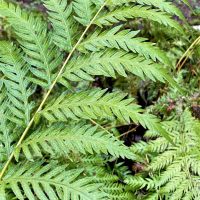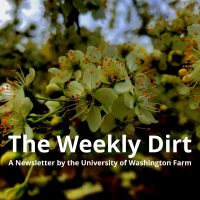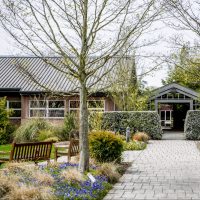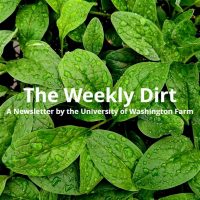Gardens for All

As an African American woman who has worked in public gardens for the past eighteen years, I often experienced firsthand the need for greater diversity. The lack of inclusion in the workspace is not an issue exclusive to public gardens, but it should be noted that many public gardens in the United States were founded by white people and many are primarily staffed by white people, despite being located in communities of color.
Read moreThe Weekly Dirt 3.30.22
3.30.22
Around The Farm
by Annaliese Youngs, senior, Public Health Global Health Major, Food System Nutrition and Health Minor, UW Farm Education Intern, Winter Quarter '22
With the season changing and spring just around the corner, the UW Farm is busy starting crops.
With average the last frost date of April 6th in the Seattle area, there are a variety of methods the UW Farm uses to get a head start on spring planting.
Fantastical Fronds and Where to Find Them

Ferns are unique in that they do not flower or produce seeds, but instead reproduce vegetatively or through spores. If you’ve ever seen dark brown dots on the bottom of a fern frond – those are spores! Spores are most often found on the underside of fronds in clusters called sori.
1) Woodwardia fimbriata Giant Chain Fern
This species is the largest fern native to North America and is found on the coast in moist coniferous forests from British Columbia to Baja California.
Read moreSpotlight on Bothell BES 495 Student Interns: Jessica Rouhana and Jit Singh Roopra
University of Washington Bothell (UWB) and the University of Washington Botanic Gardens (UWBG) at the Washington Park Arboretum (WPA) partnered this Winter quarter with two community based learning and research BES 495 student interns. Here are their BES 495 project blogs:
Planting Projects at WPA by Jessica Rouhana, BS in Conservation and Restoration Science
Two projects were focused on: Rhododendron Glen and the Lightning Tree.
UW Farm Weekly Dirt: Volunteer with Us!

by Dannette Lombert, Food Security Lead, AmeriCorps Member
The UW Farm is Springing into the Season!
Happy Spring Equinox! Over here at the farm, we are well into the spring season. Our days are filled with starting seeds, transplanting, prepping beds, mulching, and harvesting. Now that the season is picking up with our seeds showing their true leaves and hardening off, we have added more volunteer shifts!
The Weekly Dirt 3.23.22
3.23.22
Around The Farm
by Dannette Lombert, Food Security Lead, AmeriCorps Member
The UW Farm is Springing into the Season!
Happy Spring Equinox! Over here at the farm, we are well into the spring season. Our days are filled with starting seeds, transplanting, prepping beds, mulching, and harvesting. Now that the season is picking up with our seeds showing their true leaves and hardening off, we have added more volunteer shifts!
The Weekly Dirt 3.16.22
3.16.22
Around The Farm
by Elizabeth Theirl, fourth-year undergraduate majoring in Neuroscience and Geography, UW Farm Environmental Justice Intern
What is Environmental Justice?
It is established that one’s geographical position can result in disproportionate levels of exposure to harmful environmental toxins and contaminants, as well as differences in accessibility to resources and outdoor spaces.
The field of Environmental Justice aims at addressing this inequality by redistributing both the environmental burdens and benefits among all members of society, regardless of age, immigration status, gender, sexual orientation, race, and ethnicity.
*New* Accessibility Resources for Our Gardens

Here at the UW Botanic Gardens, we strive to make our spaces accessible to people of all backgrounds. We are grateful to members of our community for reaching out to inquire about the accessibility of our gardens. We have compiled a list of available resources on accessibile parking, trails, benches, and more for both the Washington Park Arboretum and Center for Urban Horticulture.
Read moreThe Weekly Dirt 3.9.22
3.9.22
Around The Farm
by Gulsima Young, Double Major in Informatics and Environmental Studies, UW Farm Informatics Intern
Direct Seeding at the UW Farm
There are many different methods utilized to start crops at the beginning of each growing season. Some crops at the UW Farm are started in a greenhouse and then transplanted, while others grow best when their seeds are planted right into the soil.
